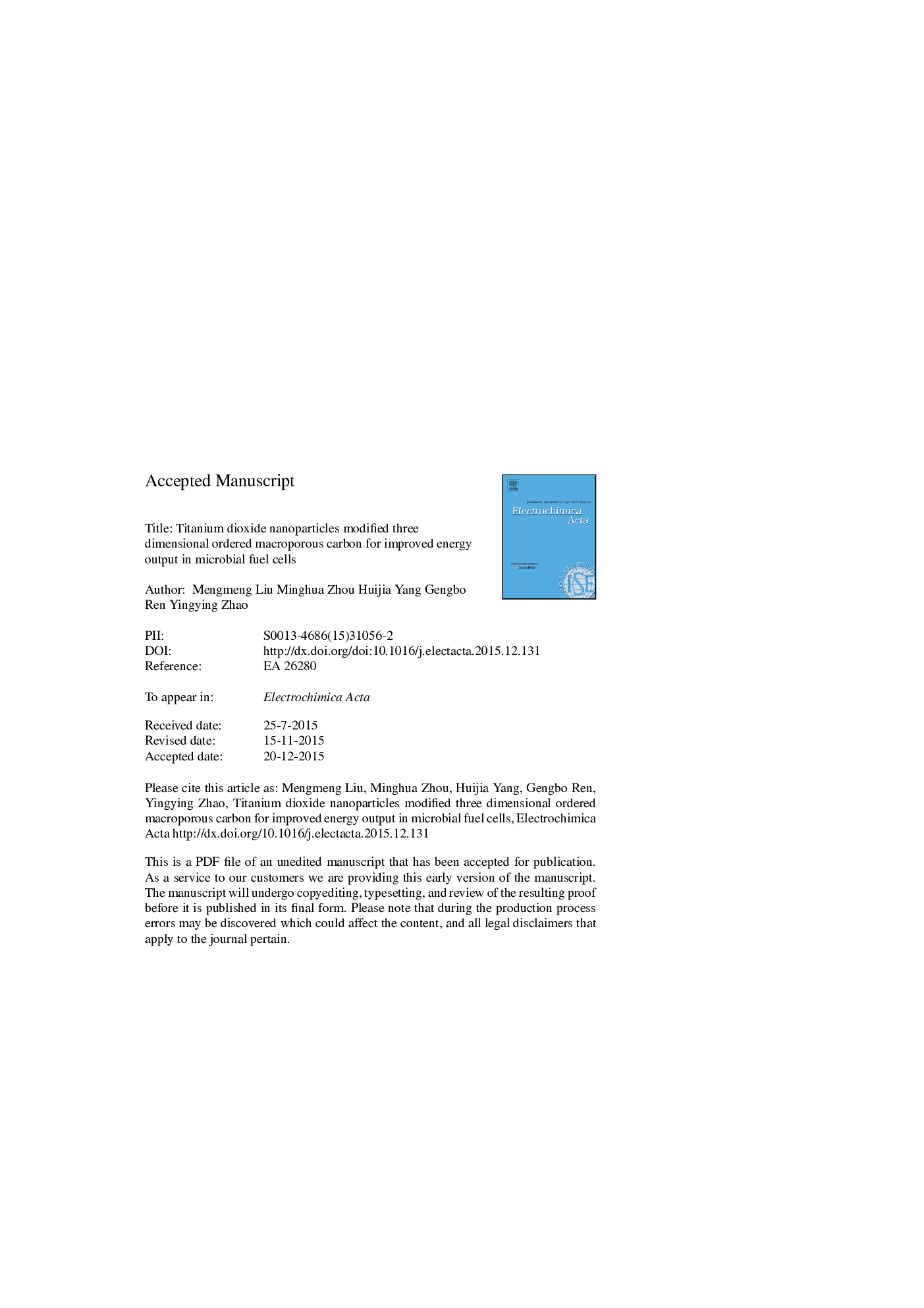| Article ID | Journal | Published Year | Pages | File Type |
|---|---|---|---|---|
| 6609554 | Electrochimica Acta | 2016 | 22 Pages |
Abstract
Pore structure and surface biocompatibility are crucial factors for microbial fuel cell (MFC) anode performance. In this study, we demonstrated a templating strategy for design of three dimensional ordered porous carbon (3DOM-C) well-patterned macrospores (ca, 400Â nm) decorated carbon cloth as anode for high power density MFC. Titanium dioxide nanoparticles (TiO2) were synthesized to modify the 3DOM-C for increasing biocompatibility. The results of SEM, X-ray diffraction, and nitrogen adsorption-desorption studies demonstrated the hybrid composite had a honeycomb structure with uniform macroporous distribution and high specific surface area. In comparison with carbon cloth MFCs, the hybrid TiO2/3DOM-C anode delivered 2.3-fold higher power density of 973Â mWÂ mâ2. The increased energy output was contributed to synergetic effects between TiO2 and 3DOM-C due to their unique properties leading to significantly improved electrocatalysis.
Related Topics
Physical Sciences and Engineering
Chemical Engineering
Chemical Engineering (General)
Authors
Mengmeng Liu, Minghua Zhou, Huijia Yang, Gengbo Ren, Yingying Zhao,
